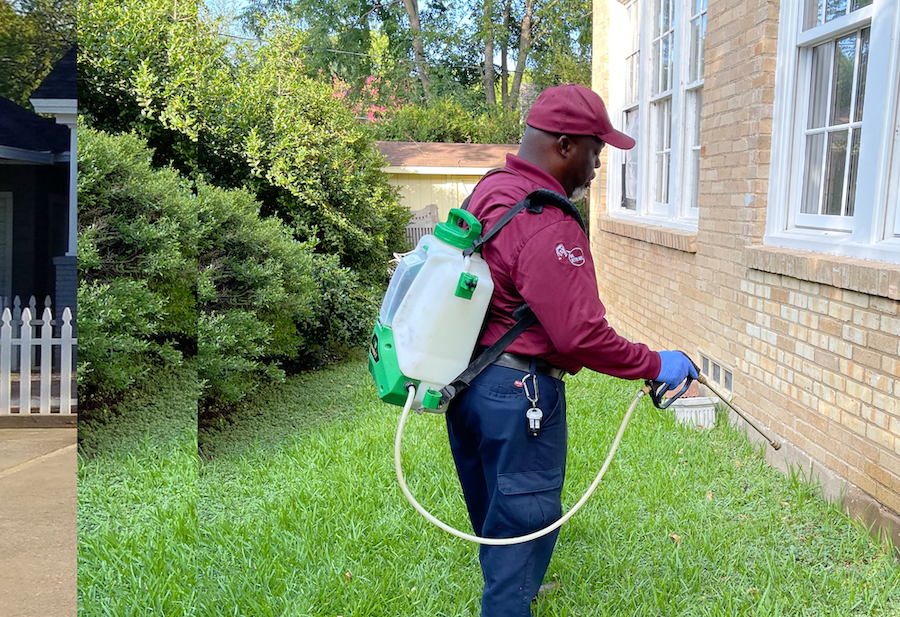Pest Control using eco-friendly and non-toxic treatment options.
Cutting-edge Bug Control Methods for Securing Your Home From Wildlife
As urban areas broaden, the communication between human environments and wildlife ends up being significantly intricate, necessitating innovative insect control methods to properly safeguard residential property. The performance of these approaches is usually contingent on a deeper understanding of wildlife actions and area involvement. This diverse technique elevates important questions regarding sustainable conjunction and the lasting implications of our insect control selections.
Recognizing Wildlife Behavior
(Pest Management)Comprehending wild animals habits is critical for effective insect control methods. Identifying these patterns permits parasite control professionals to anticipate wild animals motions and develop preventative actions.

Moreover, the social structures and territorial behaviors of particular varieties, such as raccoons or deer, can educate control approaches. By utilizing this expertise, bug control can be adjusted to be extra gentle and efficient, promoting coexistence rather than eradication. Ultimately, a thorough understanding of wild animals actions not just helps in alleviating bug problems but also cultivates a well balanced connection between human beings and nature.
High-Tech Deterrents
The assimilation of high-tech deterrents into bug control methods offers cutting-edge services that build upon understandings gained from wild animals behavior. These sophisticated technologies leverage numerous techniques to develop an atmosphere that is inhospitable to unwanted parasites while reducing injury to non-target species and the environment.
One encouraging technique is the use of motion-activated gadgets that emit noises or lights. These tools are developed to resemble natural predators or create disruptions that prevent wildlife from getting in specific areas. For circumstances, ultrasonic repellents can disorient animals, making them much less most likely to come close to homes or yards.
Additionally, thermal imaging innovation permits residential or commercial property proprietors to identify animal activity before substantial damages occurs. By identifying hotspots of wildlife existence, preventative actions can be implemented tactically. One more remarkable advancement is the use of smart traps that can inform homeowners when they catch an animal, allowing prompt and gentle elimination.
In addition, incorporating these high-tech solutions with existing insect control methods improves general efficiency. By using information analytics, residential property proprietors can continuously monitor wildlife interactions and adjust their strategies accordingly, ensuring a proactive approach to pest management that safeguards their properties efficiently.

All-natural Repellents
Natural repellents offer an eco-friendly alternative to chemical pesticides, effectively deterring insects while maintaining environmental integrity. These substances, derived from plants, important oils, or other natural sources, can provide a lasting remedy for taking care of undesirable wild animals without the negative impacts connected with synthetic chemicals.
(Organic Pest Control)Typical all-natural repellents consist of pepper mint oil, citronella, and garlic, each having unique homes that push back details parasites. As an example, peppermint oil is known to deter rodents, while citronella works against mosquitoes. Additionally, diatomaceous earth, a natural powder made from fossilized algae, can be sprinkled around yards to hinder creeping pests without damaging valuable microorganisms.
The application of natural repellents is uncomplicated, usually calling for straightforward dilution with water for sprays or direct application to influenced areas. Regular reapplication might be essential, specifically after rainfall or heavy winds, to preserve effectiveness.
Incorporating these all-natural approaches right into insect management strategies not just shields building yet likewise promotes biodiversity, ensuring that non-target varieties are not negatively affected. Pest control service. By picking natural repellents, homeowner can attain a well balanced method to pest control that aligns with their ecological values
Environment Alteration
Efficient environment alteration functions as a crucial approach in bug control, dealing with the underlying conditions that attract undesirable bugs. By modifying the atmosphere to make it much less welcoming to wildlife, building owners can significantly lower the possibility of problems. This procedure includes several vital methods, consisting of the removal of possible food sources, water, and sanctuary that pests may make use of.
One effective technique is to maintain a clean landscape, that includes normal lawn upkeep and the elimination of debris such as dropped leaves, old wood, and clutter. In addition, guaranteeing that waste is securely kept in pest-proof containers can hinder rodents and pests from foraging for food.
Another essential facet of habitat adjustment is the critical placement of plants. Selecting indigenous species that are less eye-catching to insects can aid keep a balanced environment while lowering the possibility of undesirable wild animals. Furthermore, sealing entrance factors around the home, such as voids in doors and windows, avoids bugs from locating shelter indoors.
Inevitably, efficient environment adjustment not only enhances pest control efforts yet additionally advertises a much healthier atmosphere for both residential property proprietors and regional wildlife.
Community Participation
Area participation plays an important role in amplifying the performance of parasite control efforts. Engaging local homeowners promotes a sense of common duty, index motivating individuals to get involved proactively in the prevention and monitoring of wildlife-related problems. When neighborhoods collaborate, they can apply detailed techniques that not just address instant issues yet likewise establish lasting services.
Educational programs are crucial in this context, as they notify residents concerning the significance of maintaining tidy environments and the effect of human activities on local wildlife. Workshops and informative sessions can equip area members with beneficial understanding on ideal methods for parasite prevention, consisting of proper garbage disposal and habitat alteration techniques.
Moreover, community-driven initiatives, such as area clean-up days or the establishment of wildlife-friendly zones, can dramatically decrease parasite populations. By cultivating open communication and teamwork amongst locals, neighborhood governments, and bug control specialists, communities can establish customized methods that resolve specific regional obstacles.
Conclusion
Finally, applying innovative pest control methods is necessary for effective wildlife administration on properties. Techniques such as using sophisticated deterrents, natural repellents, and habitat adjustment add dramatically to minimizing unwanted animal communications. Fostering neighborhood participation with education and learning and clean-up campaigns improves the total performance of these techniques. By adopting a detailed technique, home owners can accomplish a balance between protecting their facilities and promoting environmental harmony.